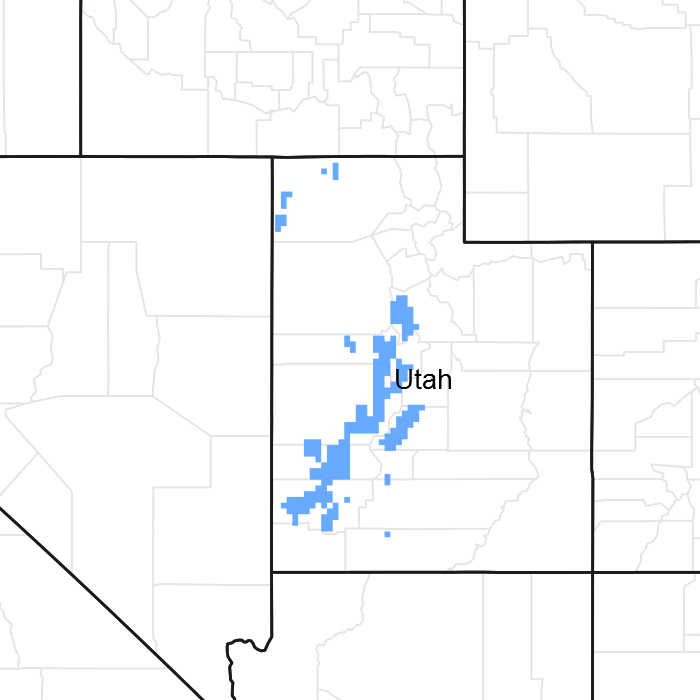Ecological dynamics
As ecological condition deteriorates due to overgrazing, Indian ricegrass, needle and thread, fourwing saltbush, and winterfat decrease, while Wyoming big sagebrush, low rabbitbrush and broom snakeweed increase.
When the potential natural plant community is burned, Wyoming big sagebrush, Indian ricegrass, and needle and thread decrease while low rabbitbrush increases.
Cheatgrass and annual forbs are most likely to invade this site.
More data needs to be collected and analyzed to refine site dynamics.
State 1
Reference State
The Reference State has three community phases that are influenced by drought, fire or other disturbances. Fire typically favors resprouting shrubs like horsebrush and grasses. Drought typically decreases grasses in the understory and insect damage can reduce shrub cover.
Community 1.1
Wyoming big sagebrush/fourwing salt bush/winterfat/Indian ricegrass/needle and thread/squirreltail
The dominant aspect of this plant community is Wyoming big sagebrush. Fourwing saltbush and winterfat are also commonly present. Indian ricegrass and needle and thread are the principle perennial grasses. Western wheatgrass and bottlebrush squirreltail are often present. Abundant forbs include longleaf phlox and scarlet globemallow. The composition by air-dry weight is approximately 55 percent perennial grasses, 10 percent forbs, and 35 percent shrubs.
Table 5. Annual production by plant type
| Plant type |
Low
(lb/acre) |
Representative value
(lb/acre) |
High
(lb/acre) |
| Grass/Grasslike |
248 |
371 |
495 |
| Shrub/Vine |
158 |
235 |
315 |
| Forb |
45 |
68 |
90 |
| Total |
451 |
674 |
900 |
Table 6. Ground cover
| Tree foliar cover |
0%
|
| Shrub/vine/liana foliar cover |
10-25%
|
| Grass/grasslike foliar cover |
15-40%
|
| Forb foliar cover |
3-5%
|
| Non-vascular plants |
0%
|
| Biological crusts |
0%
|
| Litter |
0%
|
| Surface fragments >0.25" and <=3" |
0%
|
| Surface fragments >3" |
0%
|
| Bedrock |
0%
|
| Water |
0%
|
| Bare ground |
0%
|
Table 7. Canopy structure (% cover)
| Height Above Ground (ft) |
Tree |
Shrub/Vine |
Grass/
Grasslike |
Forb |
| <0.5 |
– |
– |
– |
– |
| >0.5 <= 1 |
– |
– |
– |
– |
| >1 <= 2 |
– |
– |
35-45% |
0-10% |
| >2 <= 4.5 |
– |
20-30% |
– |
– |
| >4.5 <= 13 |
– |
– |
– |
– |
| >13 <= 40 |
– |
– |
– |
– |
| >40 <= 80 |
– |
– |
– |
– |
| >80 <= 120 |
– |
– |
– |
– |
| >120 |
– |
– |
– |
– |
| Jan |
Feb |
Mar |
Apr |
May |
Jun |
Jul |
Aug |
Sep |
Oct |
Nov |
Dec |
| J |
F |
M |
A |
M |
J |
J |
A |
S |
O |
N |
D |
Community 1.2
Fourwing salt bush/horsebrush/Indian ricegrass/needle and thread/squirreltail
Wyoming big sagebrush and shadscale decrease in the community. Fourwing saltbush and winterfat resprout and reestablish following fire. Yellow rabbitbrush and horsebrush species (Nuttall, smooth, and/or spiny) may increase significantly in the community following fire. Much of the excess fine fuel accumulation is removed. Fire tolerant shrubs typically persist as dominants in the community for 30 years or longer. Indian ricegrass, needle and thread and other cool season bunchgrasses flourish; western wheatgrass increases in both cover and percent composition. Percent composition by air-dry weight is 60 percent grass, 10 percent forbs, and 30 percent shrubs.
Community 1.3
Wyoming big sagebrush/Fourwing salt bush/Indian ricegrass/perennial grasses
Wyoming big sagebrush and fourwing saltbush increase significantly composition. Winterfat and yellow rabbitbrush may increase also. Shrubs become decadent due to age. Indian ricegrass, needleandthread and other cool season bunchgrasses begin to lose vigor because of increased shrub competition and become dense with old vegetation. Western wheatgrass increases. Percent composition by air-dry weight is 40 percent grass, 10 percent forbs, and 50 percent shrubs
Pathway 1.1b
Community 1.1 to 1.2
Recent fire occurrence (1 to 30 years).
Pathway 1.1a
Community 1.1 to 1.3
Extended period of time without a major disturbance such as fire; insect damage; or prolonged drought. Fire frequency extends well beyond the 40 to 50 year average for the site.
Pathway 1.2a
Community 1.2 to 1.1
Normal fire frequency of 40 to 50 years returns on the site.
Pathway 1.3a
Community 1.3 to 1.2
Recent fire occurrence (1 to 30 years).
State 2
Current Potential State
Plant communities in the Current Potential State can include native and acclimatized, naturalized and invasive non-native species. This site is irreversibly changed from the Reference State because these non-native species will now remain a permanent part of the community.
Community 2.1
Wyoming big sagebrush/Fourwing salt bush/Indian ricegrass/non-native species
This community is dominated by Wyoming big sagebrush. Fourwing saltbush and winterfat are also commonly present. Indian ricegrass and needle and thread are the principle perennial grasses. Western wheatgrass and bottlebrush squirreltail are often present. Abundant forbs include longleaf phlox and scarlet globemallow. This community is dominated by native species, but may include acclimatized, naturalized and invasive non-native species. Percent composition by air-dry weight is 55 percent grass, 10 percent forbs, and 35 percent shrubs. Natural fire frequency is estimated to be 40 to 50 years.
Community 2.2
Yellow rabbitbrush/Horsebrush/fourwing salt bush/purple threeawn/non-native species
Wyoming big sagebrush and shadscale decrease in the community. Fourwing saltbush and winterfat resprout and reestablish following fire. Yellow rabbitbrush and horsebrush species (Nuttall, smooth, and/or spiny) may increase significantly in the community following fire. Much of the excess fine fuel accumulation is removed. Fire tolerant shrubs typically persist as dominants in the community for 30 years or longer. Indian ricegrass, needle and thread and other cool season bunchgrasses flourish; western wheatgrass increases in both cover and percent composition. This community is dominated by native species, but may include acclimatized, naturalized and invasive non-native species. Percent composition by air-dry weight is 60 percent grass, 10 percent forbs, and 30 percent shrubs.
Community 2.3
Wyoming big sagebrush/Fourwing salt bush/purple threeawn/sand dropseed/non-native species
Wyoming big sagebrush and fourwing saltbush increase significantly composition. Winterfat and yellow rabbitbrush may increase also. Shrubs become decadent due to age. Indian ricegrass, needle and thread, and other cool season bunchgrasses begin to lose vigor because of increased shrub competition and become dense with old vegetation. Western wheatgrass increases. Percent composition by air-dry weight is 40 percent grass, 10 percent forbs, and 50 percent shrubs. Annual grasses and forbs area also present in this community phase.
Pathway 2.1b
Community 2.1 to 2.2
Recent fire occurrence (1 to 30 years).
Pathway 2.1a
Community 2.1 to 2.3
Improper grazing (including season long, overstocking, wrong season, etc.) and/or drought remove annual and perennial fine fuels from the site lessening the potential for fire to occur. Fire frequency extends beyond the 40 to 50 year average for the site. Utah juniper may invade the site if a seed source is available.
Pathway 2.2a
Community 2.2 to 2.1
Fire frequency returns to within the normal range for the site (40 to 50 years).
Pathway 2.3a
Community 2.3 to 2.2
Recent fire occurrence (1 to 30 years).
State 3
Non-sprouting Shrub and/or Utah Juniper/Invasive Annual State
Non-native annual grasses dominate the understory with few native bunch grasses remaining in the community. Shrub layer is dominated by Wyoming sagebrush in a greater cover than is seen in State 1 or 2. This state is caused by lack of disturbance in the shrub layer (fire or insects) and removal of bunchgrasses in the understory (typically season long grazing) that are replaced with invasive, non-native annual grasses.
Community 3.1
Wyoming big sagebrush/and/or Utah juniper/invasive annuals/native perennials
Where Utah juniper has invaded the community, it dominates the overstory; Wyoming big sagebrush and other shrubs are reduced in the understory due to shading, moisture competition, and allopathy; otherwise, Wyoming big sagebrush dominates the shrub layer. Fourwing saltbush and winterfat are dead or decadent. Remaining perennial herbaceous vegetation is mostly found only in protected locations under shrubs. Invasive, non-native grasses and weeds including cheatgrass, annual mustards, redstem storksbill, etc. dominate the understory. Some soil movement is evident.
Community 3.2
Wyoming big sagebrush/and/or Utah juniper/invasive annuals
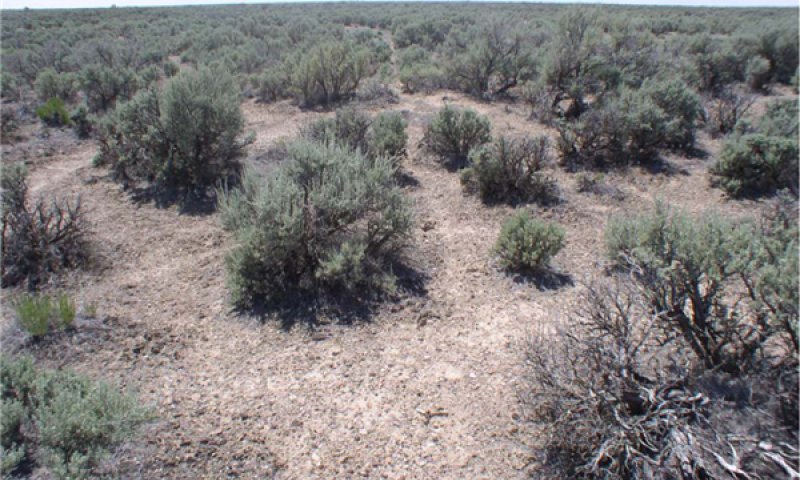
Figure 11. Community Phase 3.2

Figure 12. Community Phase 3.2, photo 2– Mixed sagebrush, Utah juniper, rabbitbrush, and cheatgrass. Photo taken by Keith Wadman, 9/18/2006, location: T11S, R6W, S25, NW1/4.
Where Utah juniper has invaded the community it dominates the overstory; Wyoming big sagebrush and other shrubs are reduced significantly due to shading, moisture competition, and allopathy, otherwise, Wyoming big sagebrush dominates the shrub layer. Fourwing saltbush and Winterfat are largely absent. Remaining perennial herbaceous vegetation is rare and is found only in protected locations under shrubs. Invasive, non-native grasses and weeds including cheatgrass, annual mustards, redstem storksbill, etc. dominate the understory. Soil is moving and is accumulating around shrubs.
Pathway 3.1a
Community 3.1 to 3.2
Long-term improper grazing (including season long, overstocking, wrong season, etc.) and/or drought remove annual and perennial fine fuels from the site lessening the potential for fire to occur. Fire frequency is greater than 100 years.
Pathway 3.2a
Community 3.2 to 3.1
Site is properly grazed for an extended period of time. Native perennial vegetation is recovering, but annual weeds still dominate the understory. Fire frequency is well beyond normal for the community. Fire frequency is greater than 100 years.
State 4
Sprouting Shrub/Invasive Annual State
Sprouting shrubs can dominate the shrub layer in the Sprouting Shrub/Invasive Annual State. The understory is almost entirely comprised of annual non-native species.
Community 4.1
Yellow rabbitbrush/horsebrush/invasive annuals/native perennials
Yellow rabbitbrush dominates the shrub layer. Fourwing saltbush and Winterfat are absent. Horsebrush species (Nuttall, smooth, and spiny) can also be plentiful if conditions are right. Fire tolerant shrubs persist as dominants with fire periods occurring at intervals of 10 to 30 years or less. Broom snakeweed may be a dominant episodic species when conditions are favorable. Native bunchgrasses are significantly reduced with only a few purple threeawn and sand dropseed remaining; invasive annuals including cheatgrass, annual mustards, and redstem storksbill dominate the understory. Bare ground increases and soil movement is evident with mounding around shrubs.
Community 4.2
Yellow rabbitbrush/horsebrush/invasive annuals
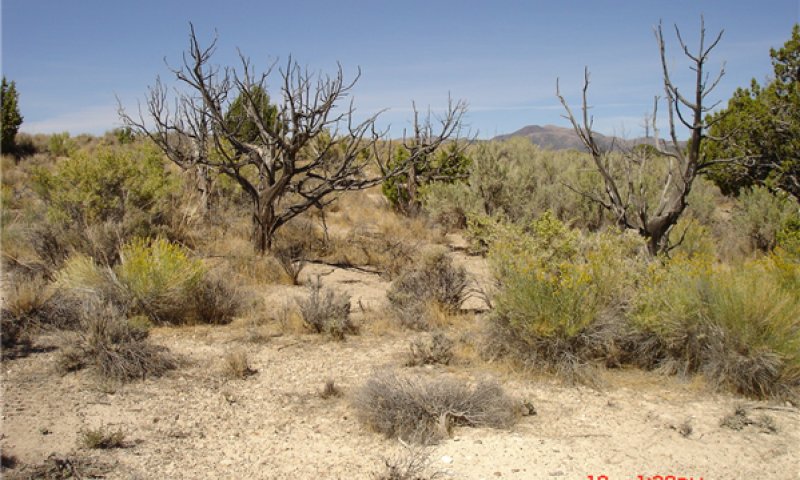
Figure 13. Community Phase 4.2, photo 1- After an old burn, rabbitbrush, Wyoming sagebrush dominant. Photo taken by Keith Wadman, 9/18/2006, T11A, R6W, S25, NW1/4
Yellow rabbitbrush dominates the shrub layer. Fourwing saltbush and winterfat are absent. Horsebrush species (Nuttall, smooth, and spiny) can also be plentiful if conditions are right. Fire tolerant shrubs persist as dominants with fire periods occurring at intervals of 5 to 30 years. Broom snakeweed may be a dominant episodic species when conditions are favorable. Only remnant native bunchgrasses remain; invasive annuals including cheatgrass, annual mustards, and redstem storksbill dominate the understory. Percent bare ground increases and soil movement is evident with mounding around shrubs.
Pathway 4.1a
Community 4.1 to 4.2
Sustained, long-term period of improper grazing (including season long, overstocking, wrong season, etc.) and/or drought reduce perennial fine fuels from the site. Recent fire removes non-sprouting shrubs from the community. Yellow rabbitbrush and horsebrush species may become dominant.
Pathway 4.2a
Community 4.2 to 4.1
Site is properly grazed for an extended period of time. Native perennial vegetation is recovering very slowly. Fire frequency is 10 to 30 years.
State 5
Seeded Range State
The Seeded Range State represents areas that have been seeded with either non-native bunch grasses, like crested wheatgrass (Agropyron cristatum) or other bunch grasses. Shrubs are typically low in cover after a seeding but may return after the seeding.
Community 5.1
Introduced perennial herbaceous

Figure 14. Community phase 5.1, photo 1
This community is seeded to rangeland species that may be composed of introduced, native or combinations of these species. Unwanted trees and/or shrubs are reduced, but they may still occupy a portion of the site due to natural regeneration. Invasive annual grasses and weedy forbs, primarily cheatgrass and various annual mustards, may be present in the seeding. Healthy range seedings are typically resistant to the occurrence of wild fire.
Community 5.2
Native shrubs/Invasive annuals/introduced perennials
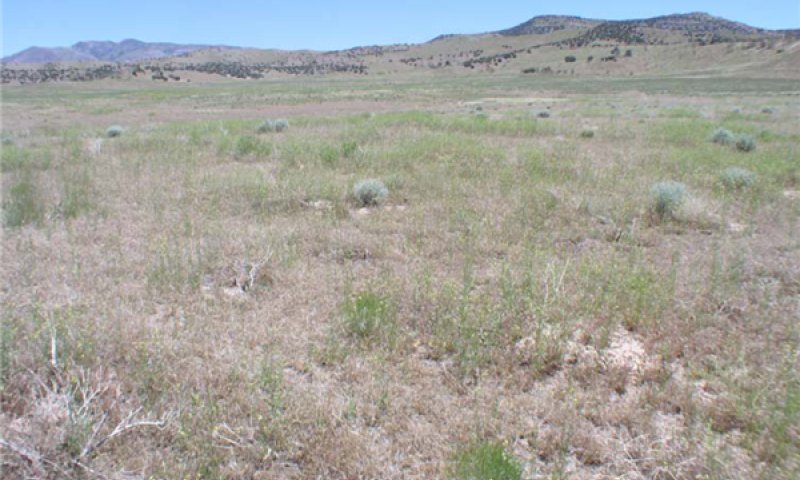
Figure 15. Community Phase 5.2, photo 1
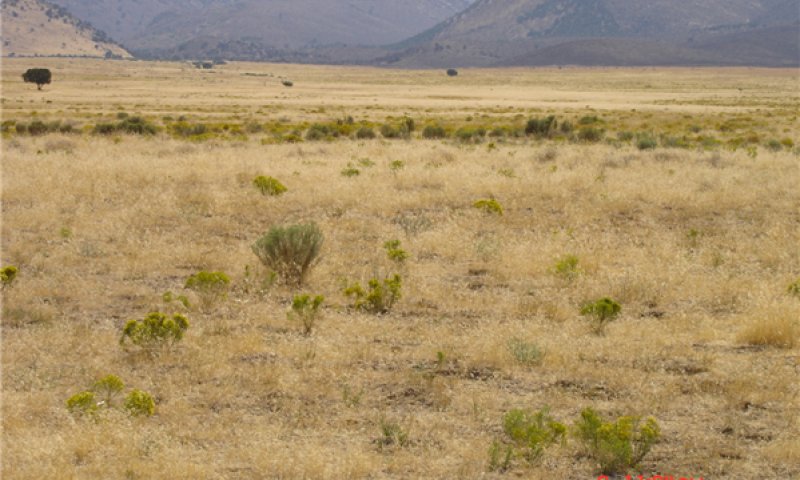
Figure 16. Community Phase 5.2, photo 2: Broom snakeweed, crested wheatgrass, cheatgrass. Location T16S, R4W, S3, SE1/4. Photo taken by Keith Wadman, 9/8/2006.
This community is present after either a failed seeding or a heavily overgrazed one. Site may be herbaceous or may be returning to shrubs and/or Utah juniper. The state is primarily composed of invasive annual grasses and weedy forb species, mostly cheatgrass and various annual mustards. Broom snakeweed may be an episodic dominant species when conditions are favorable.
Pathway 5.1a
Community 5.1 to 5.2
Introduced perennial herbaceous
Native shrubs/Invasive annuals/introduced perennials
Seeding is in poor condition; and is being improperly grazed (including season long, overstocking, wrong season, etc.); and/or drought has reduced any perennial grasses established. Highly combustible fine fuels from invasive annuals shorten the fire frequency.
Pathway 5.2a
Community 5.2 to 5.1
Native shrubs/Invasive annuals/introduced perennials
Introduced perennial herbaceous
Site receives excellent grazing management for a long period of time. Highly combustible fine fuels from invasive annuals may continue to dominate the community resulting in a shortened fire frequency. Seeded perennial vegetation slowly recovers.
Transition T1a
State 1 to 2
Long-term improper grazing (including, season long overstocking, wrong season, etc.) and/or prolonged drought that removes fine fuels from the site lessening the potential for fire to occur. This allows both sprouting and non-sprouting shrubs such as Wyoming big sagebrush, fourwing saltbush, winterfat, and yellow rabbitbrush to increase. Shrubs may become decadent due to age. Indian ricegrass and other perennial bunchgrasses lose vigor and decrease in the community due to shrub competition and grazing pressure. Purple threeawn and sand dropseed may increase. Utah juniper seedlings and saplings may begin to invade the community if a seed source is available.
The threshold is crossed when there is an introduction of non-native species, primarily cheatgrass and various annual mustards, that become established in the community.
Prior to crossing the threshold, if the site is properly grazed over an extended period of time, native perennial vegetation may recover. Fire frequency can return to within normal range for the site. These events could set the site back into the normal range of variability.
Transition T2a
State 2 to 3
Sustained, long-term period of improper grazing (including season long, overstocking, wrong season, etc.); and/or prolonged drought; reduced fine fuels resulting in the continued lengthening of fire period and a dense shrub and/or tree overstory, significant reduction of native perennial vegetation and an increase in invading annuals. Utah junipers may increase to occupy a significant portion of the overstory, if a seed source is present. Wyoming big sagebrush dominates the shrub layer and may be decadent due to age. Indian ricegrass and other perennial bunchgrasses are significantly reduced due to increased shrub competition and/or heavy grazing pressure. Purple threeawn and sand dropseed may increase. The threshold is crossed when invasive annuals such as cheatgrass and annual mustards dominate the understory. The occurrence of fire extends well beyond the normal period for this site.
Transition T2b
State 2 to 4
Long-term improper grazing (including season long, overstocking, wrong season, etc.) and/or prolonged drought; shortened fire frequency allows site to be dominated by sprouting shrubs including Yellow rabbitbrush and horsebrush species. Indian ricegrass and other perennial bunchgrass species are significantly reduced due to increased shrub competition and/or heavy grazing pressure. Purple threeawn and sand dropseed may increase. Highly combustible fine fuels from invasive annuals dominate the community. Fire frequency is typically 10 to 30 years.
Transition T3a
State 3 to 4
Long-term improper grazing (including season long, overstocking, wrong season, etc.) and/or prolonged drought; shortened fire frequency allows site to be dominated by sprouting shrubs including Yellow rabbitbrush and horsebrush species; significant reduction of perennial bunchgrass species. Highly combustible fine fuels from invasive annuals dominate the community resulting in a shortened fire frequency. Fire frequency is typically 10 to 30 years.
Transition T3b
State 3 to 5
Mechanical chaining of Utah juniper where present and/or mechanical or chemical treatment of unwanted shrub species. Range seeding of native, introduced or combination of rangeland species.
Transition T4a
State 4 to 5
Mechanical, fire and/or chemical treatment removes undesirable shrubs; with range seeding of introduced, native or combination rangeland species.


